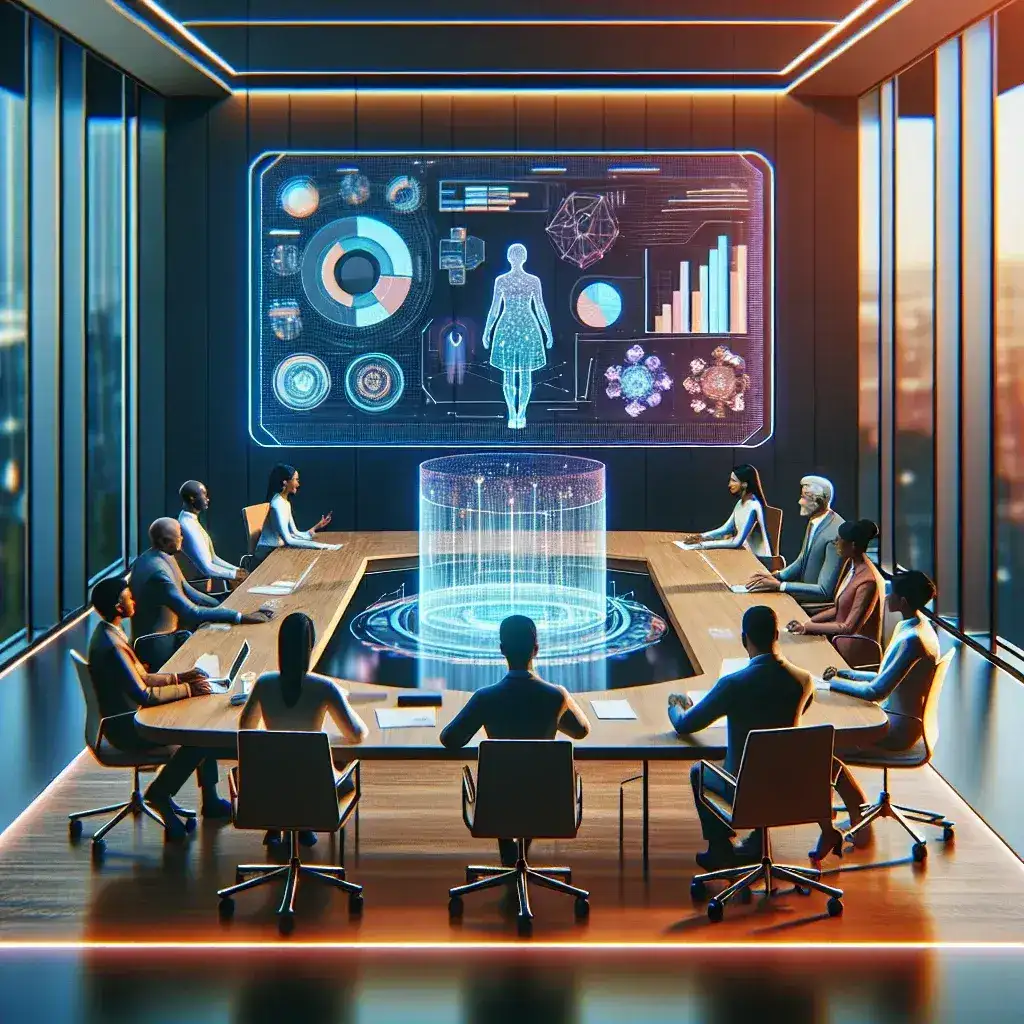Introduction
The rapid evolution of technology has transformed the way organizations communicate and collaborate, especially in a world where remote work has become the norm. Microsoft Teams, a leading platform for workplace collaboration, is at the forefront of this transformation. Recently, Microsoft announced the addition of a groundbreaking feature: a holographic meeting mode designed specifically for enterprise customers. This innovation aims to enhance virtual meetings by providing a more immersive and interactive experience.
The Rise of Holographic Technology
Holographic technology is not just a futuristic concept; it has gradually found its place in various industries, from entertainment to healthcare. By projecting 3D images that can be viewed without special glasses, holograms create a sense of presence that traditional video conferencing tools cannot match. This shift toward immersive experiences reflects a broader trend in workplace technology, where the goal is to foster deeper connections among team members, regardless of their physical location.
Historical Context
The concept of holography dates back to the 1940s, but it wasn’t until the 21st century that technological advancements made it feasible for consumer and enterprise use. In the context of remote collaboration, tools like Microsoft Teams have evolved from simple text and video chat functions to sophisticated platforms that support a variety of media and interaction styles. The introduction of holographic meeting modes represents a significant leap forward in this evolution.
Features of Microsoft Teams’ Holographic Meeting Mode
Microsoft Teams’ new holographic meeting mode is packed with features that enhance the remote working experience. Here are some key highlights:
- 3D Avatars: Participants can create personalized 3D avatars that represent them in meetings. This feature allows for a more engaging and relatable presence during discussions.
- Spatial Audio: By using spatial audio technology, the platform mimics real-life sound dynamics, making it easier for participants to focus on who is speaking.
- Virtual Whiteboards: The addition of virtual whiteboards enables teams to brainstorm and collaborate visually, enhancing creativity and idea sharing.
- Record and Replay: Meetings can be recorded and replayed in an immersive format, allowing team members to revisit discussions and decisions.
Benefits for Enterprise Customers
For enterprise customers, adopting holographic meeting technology can yield numerous benefits:
- Enhanced Engagement: Holographic meetings create a more engaging environment, reducing the likelihood of distractions that often accompany traditional video calls.
- Improved Collaboration: The ability to visualize concepts in 3D enhances collaboration, leading to more effective brainstorming and problem-solving sessions.
- Reduced Travel Costs: Holographic meetings lessen the need for physical travel, allowing companies to save on expenses while maintaining productivity.
- Global Accessibility: Teams can connect from anywhere in the world, providing organizations with the flexibility to hire talent without geographical constraints.
Considerations and Challenges
While the benefits of holographic meetings are compelling, there are also considerations that enterprise customers must keep in mind:
- Technology Requirements: To utilize the holographic features, companies will need to invest in the necessary hardware and software, which may pose a barrier for some.
- Learning Curve: Employees may require training to effectively use the new features, which could temporarily disrupt workflows.
- Data Security: As with any digital platform, concerns regarding data security and privacy must be addressed to ensure sensitive information is protected.
Future Predictions
The integration of holographic technology in business communication is likely just the beginning. As companies continue to adapt to a hybrid working model, we can expect further innovations in virtual collaboration tools. Holographic technology may expand beyond meetings, influencing training programs, product demonstrations, and even customer service interactions. For instance, imagine a sales team showcasing their product to clients in a fully interactive, 3D environment, making the experience not only more informative but also memorable.
Expert Opinions
Industry experts believe that Microsoft Teams’ holographic meeting mode could set a new standard for remote collaboration. Tech analyst Jane Doe states, “The introduction of holographic features is a game-changer. It not only enhances communication but also fosters a sense of community among remote teams that traditional methods struggle to achieve.” This sentiment underscores the potential of holographic technology to reshape the future of workplace interactions.
Real-World Applications
Organizations across various sectors are beginning to explore the applications of holographic technology within their operations:
- Healthcare: Medical professionals can conduct virtual consultations with 3D visual aids, improving patient understanding and treatment outcomes.
- Education: Educational institutions can utilize holographic modes for remote learning, making complex subjects more accessible and engaging.
- Manufacturing: Engineers can collaborate on design prototypes using holographic models, speeding up the development process and reducing errors.
Conclusion
The addition of a holographic meeting mode to Microsoft Teams is a significant milestone in the realm of enterprise collaboration tools. By leveraging advanced holographic technology, Microsoft is not only enhancing how teams communicate but also setting a precedent for the future of work. As the demand for remote collaboration continues to grow, innovations like these will be essential in creating engaging, productive, and interactive work environments. Companies that embrace these changes may find themselves at a competitive advantage, ready to thrive in an increasingly digital world.

